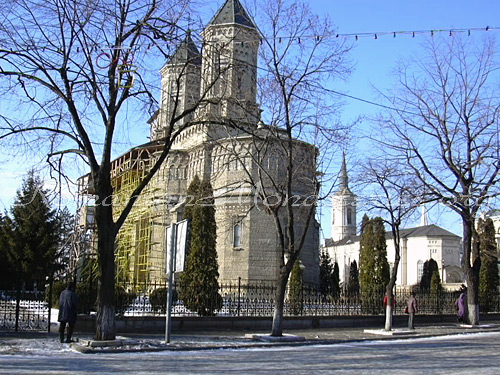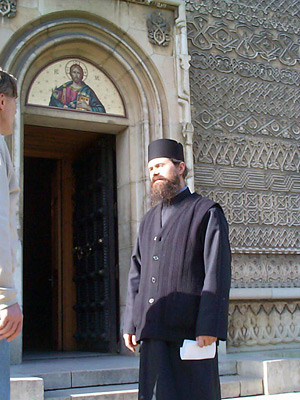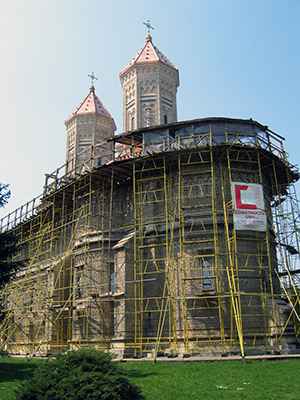Trei Ierarhi Church


The monastery together with the Church of the Three Hierarchs is considered to be the most beautiful foundation of the ruler Vasile Lupu and, at the same time, an architectonic jewel of the city of Iasi. The religious dwelling was built between 1637 – 1639 and it was consecrated by the Metropolitan Bishop Varlaam on the 6th oh May, 1639.
The value of mondial singularity is given by the external decoration, an embroidery of rocks, from the bottom up to the eaves’ cornices.
On the northern side of the pronaos there are two niches sheltering the bones of the family of the ruler Vasile Lupu, and on the southern side rest the bones of the rulers Dimitrie Cantemir (1710-1711) and Alexandru Ioan Cuza (1859-1866). It’s on this same niche that in 1641 were deposited the relics of Saint Parascheva, having as day of celebration the 14th of October, and in 1889 these were moved in the Metropolitan Cathedral.
By the end of the nineteenth century, the church was restored from the foundation, under the surveillance of the architect André Lecomte de Nouy. The paintings, the catapetasma and the furniture in massive bronze were executed on the expense of King Carol the Ist.

The rededication of the church took place in 1904. The historians record, among others, two important events in the history of the monastery: the interorthodox synod in Iasi, in 1642, when the representatives of the main branches of orthodoxy came here, and the year 1645, when the patriarch Paisie of Jerusalem, former abbot at Manastirea Galata (the Galata Monastery) was anointed.
The printing house established at Trei Ierarhi (Three Hierarchs) is considered to be the first in Moldova. The printing press issued the first book in Romanian “Cartea romaneasca de invatatura” (Romanian Book of Knowledge) (1643), and also other reference books for the Romanian culture.
In 1821, it’s from the courtyard of the Monastery Three Hierarchs that was given the signal for the liberation of Greece, through the voice of Alexandru Ipsilanti who presented a Proclamation (28 February 1821) in which he stated the objectives of the Eteria, in it’s fight for the liberation of the Balkan nations.
In 1997, in the monastery’s churchyard was unveiled the bust of Mihai Eminescu, who had lived here for a while.
Church’s dedication day is the feast “The Three Holly Hierarchs: Vasile cel Mare (Vasile the Great), Grigore de Nazianz, Ioan Gura de Aur”, on the 30th of January.

 Churches from Iasi
Churches from Iasi City of Iasi
City of Iasi Palace of Culture – Iasi
Palace of Culture – Iasi

